My maiden name is Guenther, and my dad’s side of the family has a pretty German heritage, but somehow or other I don’t think I ever tasted sauerkraut until I was an adult. Most likely my mom, who is all Irish, didn’t fancy the stuff. So it just wasn’t something I ever ate as a kid, and I must have therefore figured it was a “yucky” food, and never sought it out. Until one day I was visiting some relatives on my own after college, and they had sauerkraut as a side dish. I enjoyed it from the first tentative bite! It was like pickles, sour and salty and a bit crunchy. I started buying it at the store from then on – not religiously, but when I remembered it as a flavorful condiment.
After learning more about fermented foods, recently, I have decided that homemade sauerkraut is the next project!
And not only that, but I decided I first needed to make my own ceramic crock to ferment it in, being that I am a potter, after all.
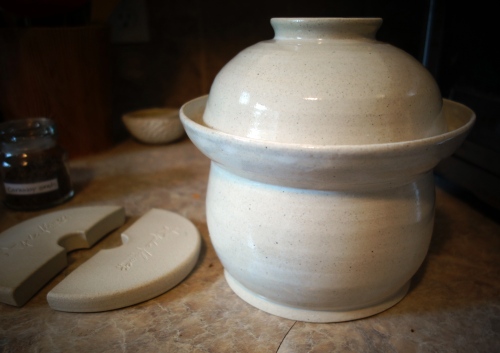
My first attempt at a handmade fermentation crock
Now that I had a crock to ferment in, here’s the process I followed for homemade sauerkraut!
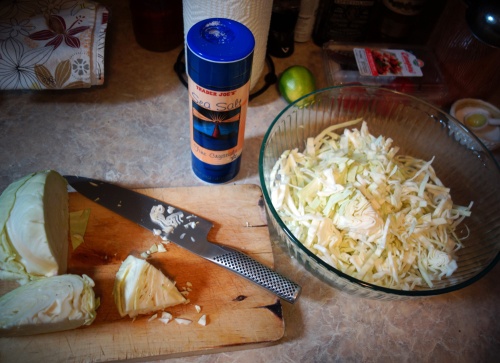
Chopped Cabbage and Salt
I filled a huge bowl with chopped cabbage. Just one head, about 2 lbs. One head of cabbage was more volume than I expected! But then I added sea salt, probably about 3 teaspoons (I didn’t measure), and started squeezing the buhjeezus out of it.
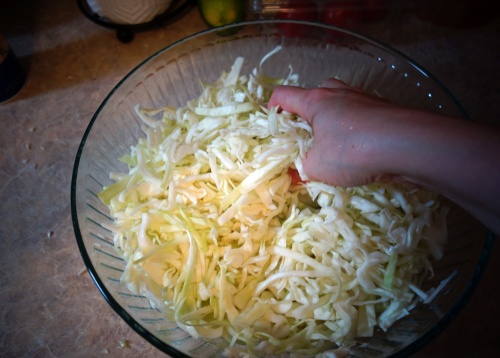
Massaging the salted cabbage
This got the cabbage all coated with the salt, and already it started drawing the water out. After walking away, and then coming back to repeat the massaging process every 10 minutes or so, the cabbage really started releasing its juices.
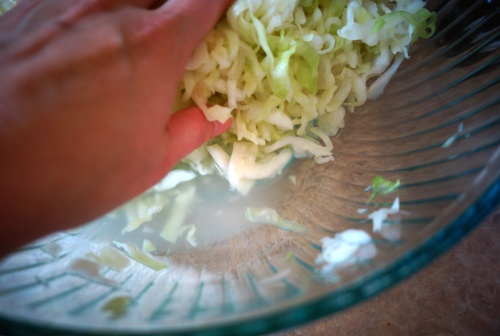
Cabbage juices pooling in the bowl
After an hour of this, I felt the cabbage was sufficiently reduced in volume and wilted enough to start packing into the crock. I tossed in a teaspoon of caraway seeds (because Michael Pollan added some to his in Cooked), and then into the crock it went, handful by handful.
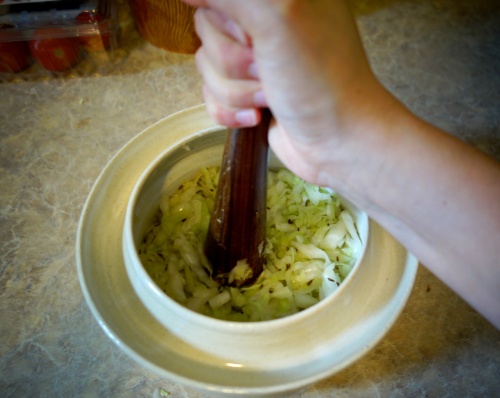
Pounding down the cabbage
I used a cocktail muddler to really pound down the cabbage. This forces out the air, packing it down, and it gets the water to continue squeezing out of the cabbage. The cabbage juice (or brine) needs to be at a level above the solid cabbage; this protects the kraut from exposure to air, which can cause it to mold (bad).
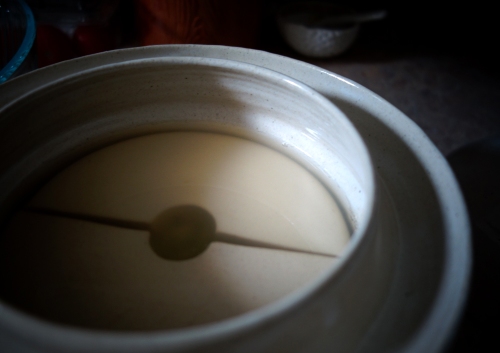
Weights to keep the kraut submerged below the brine level
Once I felt I’d pounded enough, and the cabbage was sufficiently juicy, I topped them off with two half circle ceramic weights I’d also made when I made the crock. These will keep the kraut from floating to the top and getting moldy. The bacteria that transform the cabbage in to sauerkraut prefer an oxygen-free environment, so that’s the environment I intended to create.
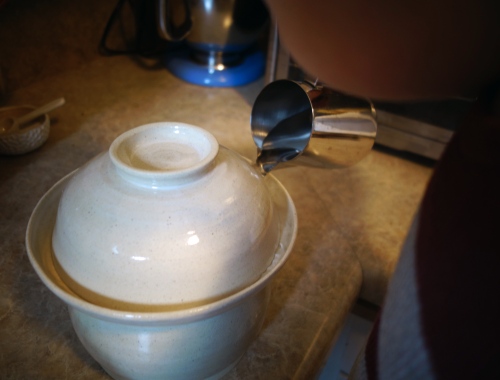
Adding water to the moat creates an airlock
The photo above shows my little helper Ethan, pouring the water into the reservoir around the crock lid. The water will let CO2 out (it’ll “burp” to release pressure), but won’t allow any air to go in.

My kitchen helper
Look how proud he is, helping Mama. Nevermind that he spilled most of the water on the counter, haha. By the way, how is it possible that this kid is two-and-three-quarters already?? Obligatory observation on how time flies.
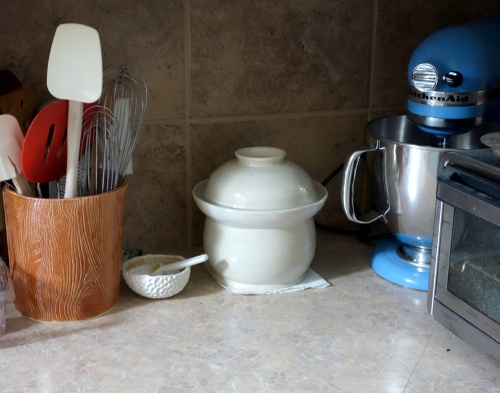
And now we wait…
So that’s it! Now my pretty little crock will live on the kitchen counter for a few weeks, and hopefully it will produce a yummy, probiotic sauerkraut!
And out in my studio I’m working on improving my design. Swing over to my Jadeflower Ceramics Etsy Site – I’ll have crocks like this (better, even!) for sale in my Etsy shop.
Here’s to my continuing fermentation adventure! Bye for now!

